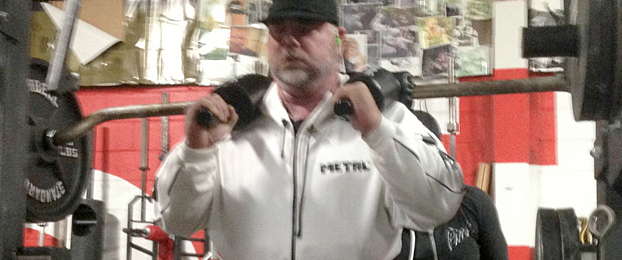
With strength training or training for powerlifting, you are in the process of trying to combine many training methods to develop many different abilities. Not all of these methods need the same amount of recovery or change of movement. Using powerlifting as an example, you will see what I mean.
Dynamic Work
Because of the SPP of the sport, it’s best to keep the movements the same. These include the deadlift, bench press and squat. Since the movement stays the same, the loading patterns need to change. This is where you see all the different dynamic training cycles. We have two manuals detailing these for the squat, deadlift and bench press. Using many different cycles is very important for constant progress.
* Average Cycle Length: three or four weeks
* Deload: after one or two cycles
Max Effort Work
Because of the increased intensity (the load) needed to use this method, the cycles are more limited. The GPP and experience of the lifter also limit the number of weeks one can use the same movement. The point is that this movement may need to change every one to three weeks. There are several articles addressing max effort work available at EFS.
* Average Cycle Length: one- three weeks
* Deload: every three to six weeks
Supplemental Work "Main"
These are the main movements you use to drive your lifts. These are different for everyone, but can include four-board presses, GHR, Shoulder Presses, and so on. These will be the movements that you feel and know have a direct relationship with your three main lifts. It is very important to train the hell out of these movements, so longer cycles should be used with higher rep ranges. These movements might cycle for eight to twelve weeks. Remember that these are movements you know can directly influence your main lifts. Choose these wisely!
Most lifters will keep these main movements during the entire meet training phase. The key is to change the load, sets and reps in a direct attempt to make these lifts as strong as you can.
* Average Cycle Length: five- eight weeks
* Deload: every eight to ten weeks
Supplemental "Hypertrophy" Work
These are the movements and methods that are used to build mass (if needed). These can change every session. Try to tear the body down as much as you can. This work should not be part of a pre-contest phase. Recovery is more important than mass at this time.
* Average Cycle Length: N/A
* Deload: every 6-8 weeks
Accessory Work "Prehab"
This is the crap you have to do to keep from getting beat up. This could be external rotator work, lower back work and so on. Usually higher reps are used with lower intensities, so movement change does not have to happen that often. These should not be too taxing. Remember that these movements are for prehab and are not supplemental work. So, you don’t have to have the same kind of RPE for these movements as you would for your max effort, dynamic or supplemental work.
* Average Cycle Length: eight to twelve weeks
* Deload: every eight to twelve weeks
Accessory "Stretching"
If needed, these movements will not change, but always be learning new ones if need be. I highly recommend the Parisi Warm Up Method DVD and the book Core Performance to help you choose movements.
* Average Cycle Length: N/A
* Deload: N/A
As you can see, everything changes at its own rate, but you also need to look at the interrelationships that are going on to determine what changes may need to take place. I ripped this off the top of my head and with my two kids tearing into everything, so take the numbers for what they are (estimates). They will be different for everyone because we all have different recovery needs and training backgrounds.
Some abilities may be deloaded while others are being pounded. This should be the way most of the year goes. Before a meet or when worn down, a full-blown deload should take place. A full-blown deload will involve deloading all abilities.
This process will change based upon what sport you are involved in because of different types of skill-based training.








